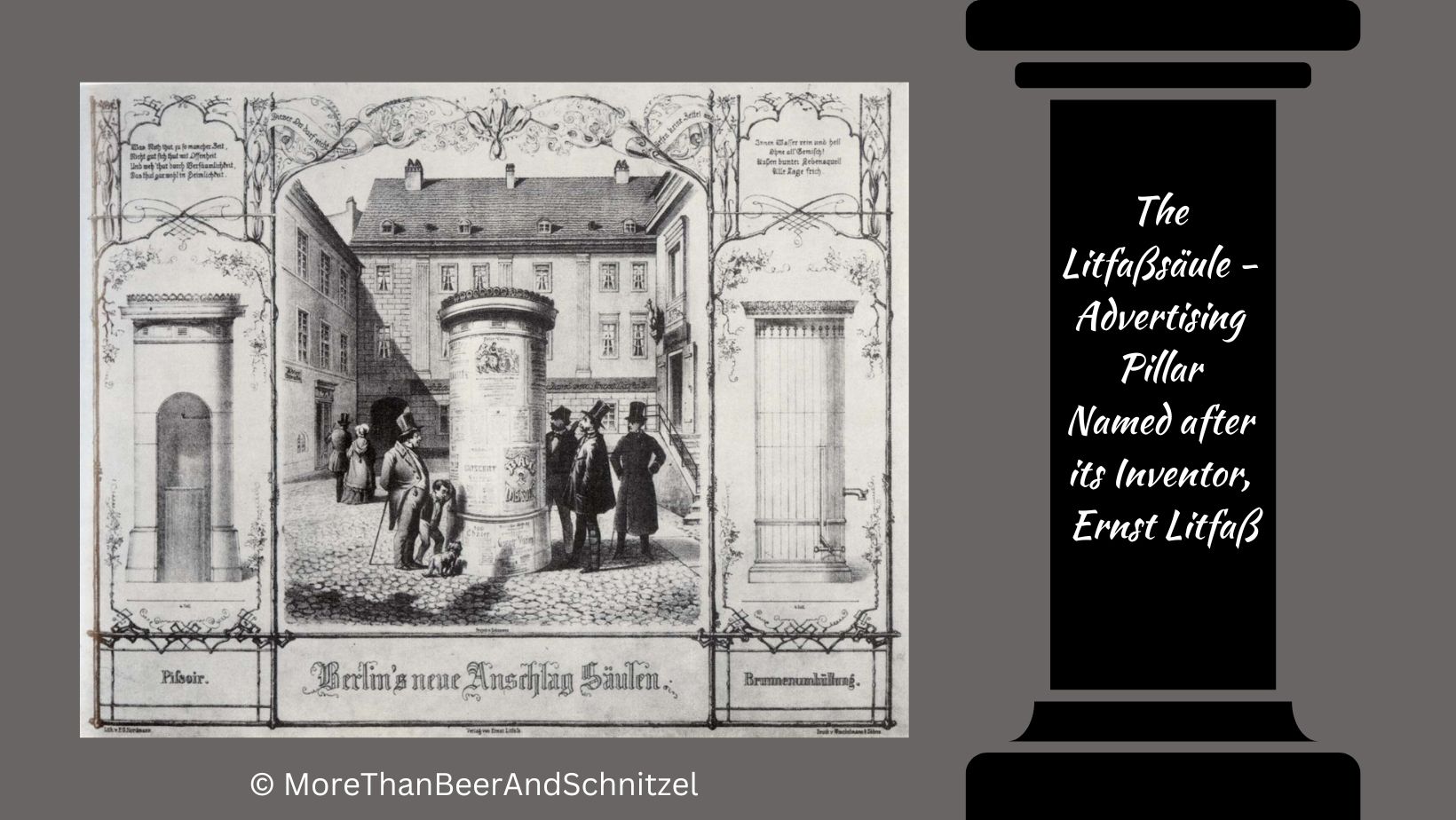Ernst Litfaß was a German publisher and printer, born on February 11th, 1816 in Berlin. He died in Wiesbaden on December 27th, 1874.
Litfaß invented and established the advertising column or pillar that is named after him: Litfaßsäule. The pillars he built in Berlin were not only for advertising but also for news about the wars that Prussia was involved in during the time from 1864 to 1871.

Printing Business
Ernst Litfaß was born in 1816 in Berlin and when it was time to work in his stepfather’s printing business, he refused and tingled through Germany (Prussia) as an actor named “Flodoardo” for two years. He returned to Berlin to do his military service, got married and realized working in printing was not such a bad idea after all. In 1845, he took over the print shop from his stepfather and soon showed an aptitude for the business, printing fast, for the masses, and producing posters in large formats.
During the March revolution of 1848, he printed flyers for the revolutionaries and the satire magazine “Berliner Krakehler” (krakeelen – to roister, to brawl). To be on the safe side, he also printed writings in favor of censorship. In April, he suggested to police to censor the public postings and notices which led to the banning of the “Berliner Krakehler” but his print shop staying open. He was a businessman first, and a revolutionary second.
In 1851, Litfaß published a newspaper called the “Berliner Tagestelegraphen” in which he informed the public about upcoming theater productions, restaurants, shows, everything that would be interesting to a culturally interested audience. The paper also had a large advertisement section.
Newspaper and political and cultural writings were not the only thing that Litfaß’ company printed. By publishing the 248th volume, he finished the “Oeconomische Encyclopädie”, which had been started by Johann Georg Krünitz.
In 1861, he was made “Commissions-Rath”, in 1865 Royal Court Printer, and in 1867 he received the title “Geheimer Commissions-Rath”. Despite his titles and the wealth he acquired, the court never really accepted him as on of their own.

Advertising Pillars
At Litfaß’ times, event organizers and promoters were using any public space to put up their posters to advertise for their events without getting the proper permission to do so. The result was “Wildplakatierung” (flyposting) and an eyesore.
While Litfaß didn’t exactly invent the advertising column — there were already similar ones in England that were lit with a lantern from the inside and drawn around the city on a wagon — Litfaß really pushed on the market with his cement cylindrical pillars. In 1854, he signed a contract with the police president in which he said he would put up 30 public urinals in exchange for the monopoly of advertisements and notices on the Litfaßsäulen.
He was celebrated for this, Berlin was apparently a pretty smelly place, but by the time the actual contract was signed the urinals were no longer part of it, and Litfaß never built a single urinal. No lawsuit stuck.

The first “Annoncier-Säule” was set up in the Münzstraße in Berlin-Mitte on April 15, 1855. Today there is a Litfaßsäule Memorial.
Von Jörg Zägel – Eigenes Werk, CC BY-SA 3.0, https://commons.wikimedia.org/w/index.php?curid=11875156
Litfaß went on a marketing campaign, passing out miniature pillars and had bards sing about his ad columns. When Prussia was fighting Denmark, Austria, and then France in the time from 1864 to 1871, Litfaß printed news about the wars faster than newspapers. He also had the monopoly (by the Prussian King) to print the Kriegsdepeschen (telegrams from the war) and post them on his pillars. He did so without earning a penny.

People would meet at the Litfaßsäulen to read the news, to talk to each other, to comfort each other. Litfaß also threw parties for returning soldiers and put on war battle reenactments. The public forgave him for not building any urinals and celebrated him as a true patriot, and nicknamed him Säulenheiliger (stylite) which literally means pillar/column saint.



Ernst Litfaß died on December 27, 1874 in Wiesbaden. But his legacy lives on the thousands of Litfaßsäulen that were erected all over Germany in the late 19th century of which many are still standing today. Today they sport advertisements for cultural events, like concerts and exhibitions, as well as sporting events, fairs, and circus visits.
Take a look at my Pinterest board for photos of Litfaßsäulen as well as painting that feature these iconic columns.





Only registered users can comment.
Comments are closed.